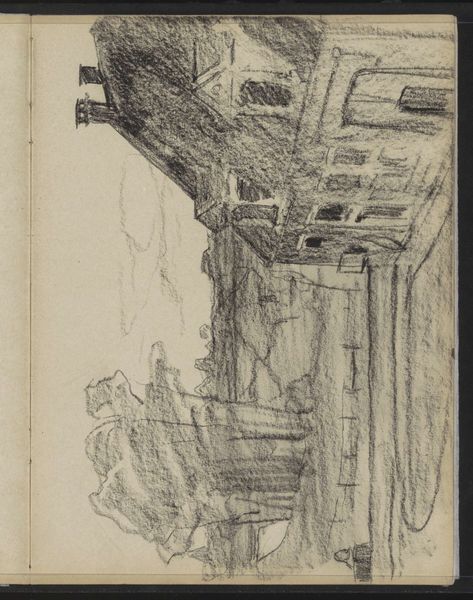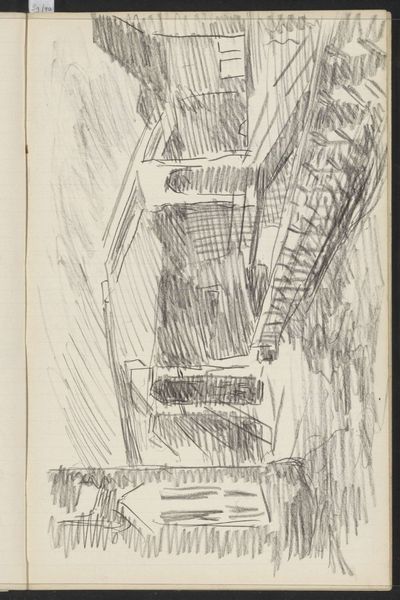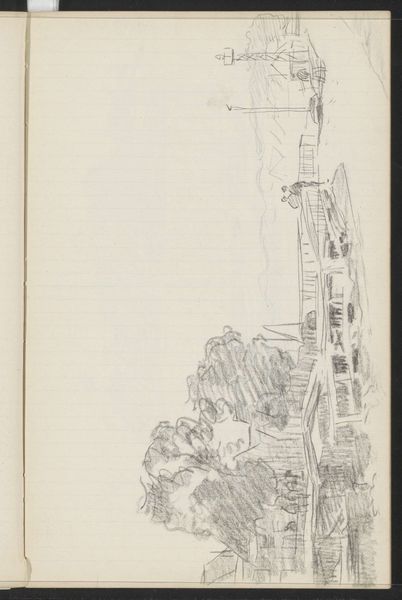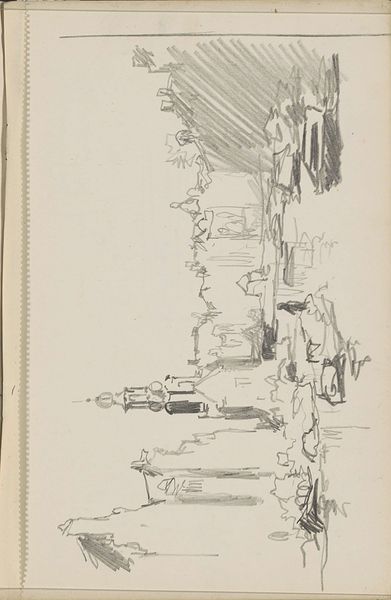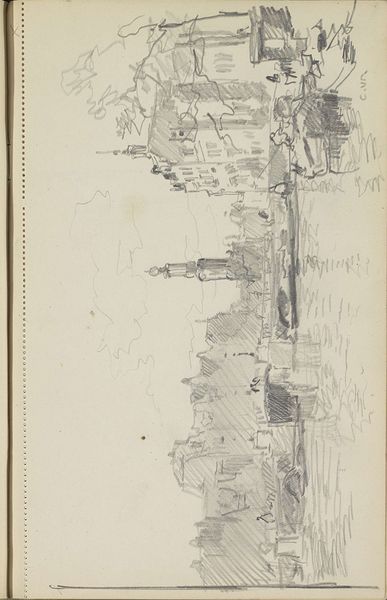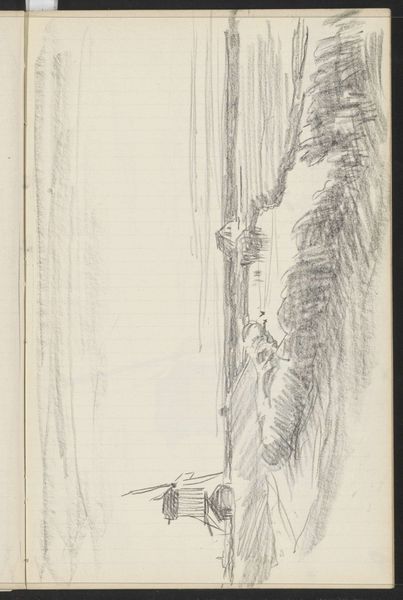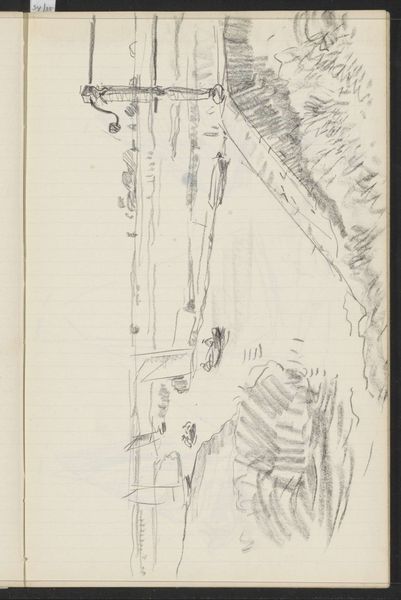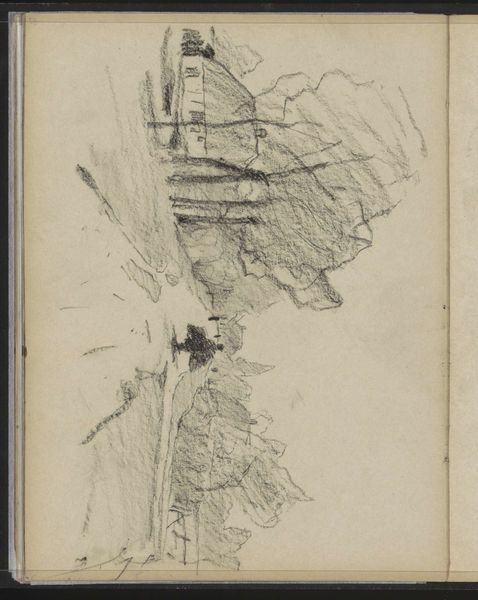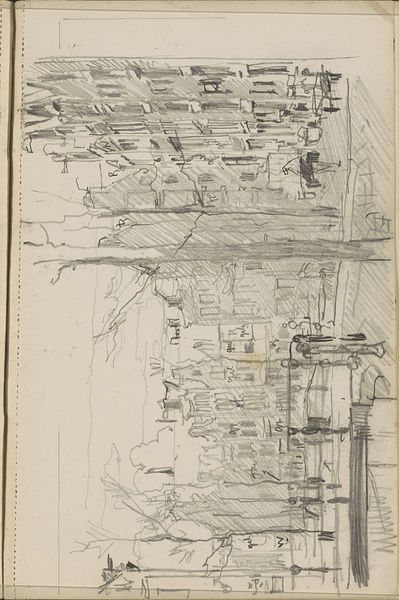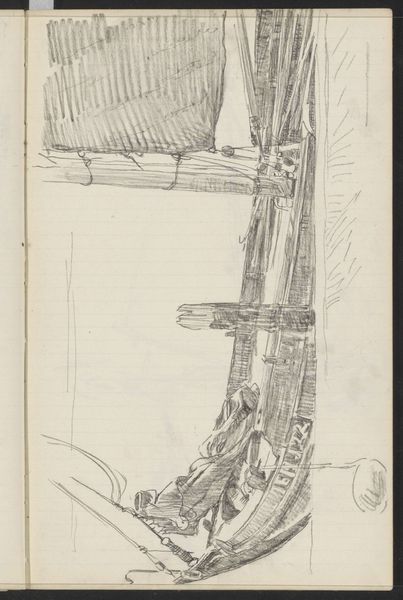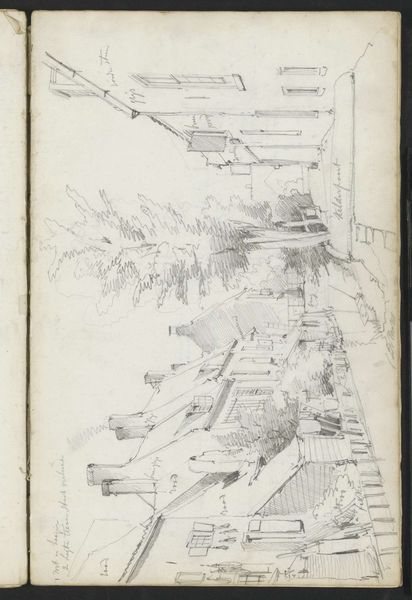
Weidelandschap met een brug over een sloot en een molen 1900 - 1931
0:00
0:00
Copyright: Rijks Museum: Open Domain
Editor: This is Willem Bastiaan Tholen’s "Weidelandschap met een brug over een sloot en een molen," or "Pastoral Landscape with a Bridge over a Ditch and a Mill," made sometime between 1900 and 1931. It’s a pen and pencil drawing in a sketchbook. The hurried, almost frantic lines suggest the artist was trying to capture a fleeting moment. How do you interpret this work, especially given its apparent spontaneity? Curator: This sketch offers a glimpse into the rapid industrial and social changes occurring during Tholen’s time. The seemingly innocuous landscape belies a tension: the pastoral ideal versus encroaching modernity, represented by the implied presence of the mill. It makes me wonder: who had access to these pastoral spaces? How did industrialization impact the lives of those who worked and lived in these areas? Editor: That’s an interesting point. I hadn’t considered the social implications, but now that you mention it, the hurried lines could also represent the quickening pace of life during that period. Do you think the lack of detail is a deliberate choice, emphasizing the transient nature of the landscape and the lives intertwined with it? Curator: Precisely! Think about who is absent from this image. The working class. The oppressed. Where are they in this so-called pastoral landscape? Tholen offers us not necessarily what is, but what is missing, and perhaps, what is about to be lost in a time of capitalist and colonialist expansion. How do you see this in relation to today’s environmental and social justice movements? Editor: It makes me think about how we often romanticize the past, ignoring the struggles and inequalities that existed. It’s a reminder that even seemingly innocent depictions of nature can be loaded with complex social and political meanings. Curator: Exactly. It prompts us to interrogate the power dynamics embedded within landscape art and consider whose stories are being told—and, crucially, whose are not. This piece challenges us to see beyond the aesthetic and to engage critically with the socio-political context of art. Editor: Thank you. This has made me think about the importance of historical context. I realize there's so much more to this seemingly simple landscape than I initially thought.
Comments
No comments
Be the first to comment and join the conversation on the ultimate creative platform.

